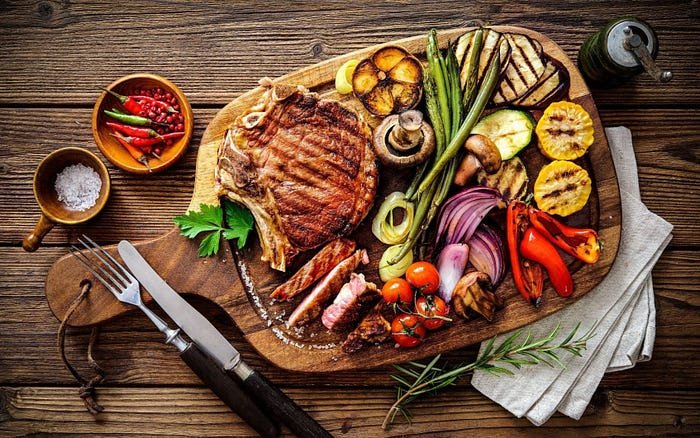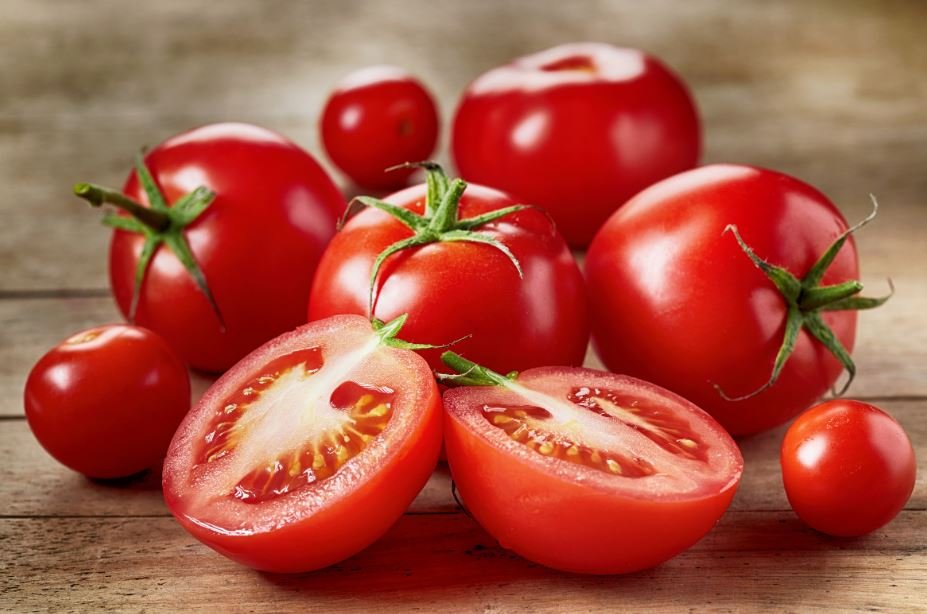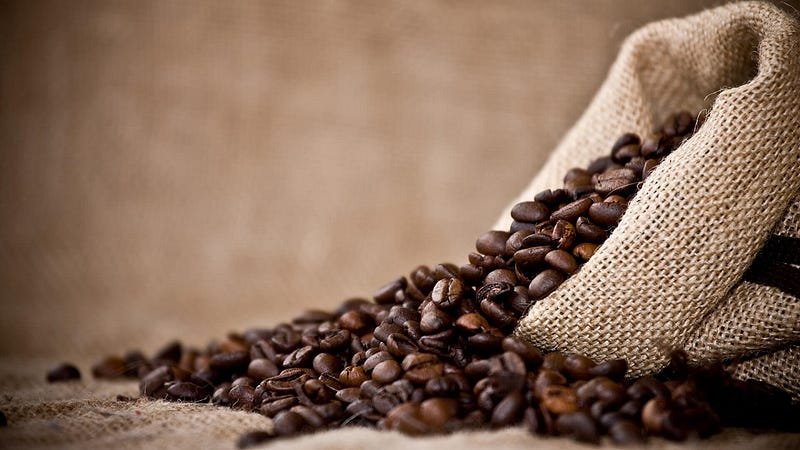The alluring world of gastronomy is as diverse as the cultures that inhabit our vibrant planet.
Food is not merely a means to nourish our bodies — it is a way to connect with different cultures, celebrate our heritage, and share experiences. It is the universal language of human connection.
Today, we’ll embark on a gastronomic tour around the world, exploring the 20 most popular foods that have transcended borders and wooed palates globally.

1. Rice — The Staple Sustainer
Rice, a primary food source for nearly half the world’s population, claims the top spot. According to the International Rice Research Institute, over 3.5 billion people rely on rice for 20% or more of their daily calories. It is the cornerstone of cuisines from Asia to Latin America, taking forms like sushi in Japan, risotto in Italy, or jollof in West Africa. Each region has its distinctive method of preparation, demonstrating the versatility of this humble grain.
2. Chicken — A Universal Delight
The Food and Agriculture Organization of the United Nations (FAO) reports that global chicken consumption has more than doubled since 1990, surpassing pork as the world’s most consumed meat. From the spicy jerk chicken of Jamaica to the savoury chicken tikka masala of India, this poultry takes on various flavors and techniques, epitomizing culinary diversity.
3. Pizza — Italy’s Global Gift
Who can resist a slice of pizza? The Association of Pizza Operators reports that about five billion pizzas are sold worldwide each year. Originally from Naples, Italy, pizza has become a global phenomenon, with each country adding its unique twist — be it Japan’s squid pizza or Brazil’s green pea-topped creation.
4. Bread — The Loaf of Life
Bread, in its myriad forms, is a universal staple. The Federation of Bakers estimates that 99% of households in the UK purchase bread, with an average consumption of 50kg per person per year. From Germany’s hearty rye bread to Mexico’s soft tortillas, bread is an integral part of global food culture.
5. Pasta — Italy’s Other Star
Pasta, with its countless shapes and sauces, holds a beloved place in global cuisine. The International Pasta Organization states that 14 million metric tons of pasta are consumed annually worldwide. Though pasta’s roots are Italian, dishes like macaroni and cheese in the United States or chow mein in China showcase its international appeal.
6. Potatoes — The Versatile Vegetable
Potatoes are the world’s fourth-largest food crop, according to the International Potato Center. This tuber is found in dishes from Ireland’s colcannon to India’s aloo gobi, emphasizing its culinary versatility.
7. Tomatoes — The Color of Cuisine
Tomatoes, though a fruit, are a staple in savoury dishes around the world. The World Processing Tomato Council reports that approximately 50 million tons of processed tomatoes are consumed annually. They are the base for Italian marinara sauce, Mexican salsa, and Indian curry, to name a few.

8. Noodles — Asia’s Prolific Staple
The World Instant Noodles Association records that over 106 billion servings of instant noodles are consumed worldwide each year. From Japan’s ramen to Vietnam’s pho, noodles are an Asian food staple that has taken the globe by storm.
9. Beef — The Meat of Choice
Beef is a significant part of many traditional dishes, from American hamburgers to Argentinian asado. The USDA Foreign Agricultural Service states that global beef consumption in 2021 was approximately 60 million metric tons.
10. Maize/Corn — The Golden Grain
Maize, also known as corn, is the most grown grain crop worldwide. The FAO estimates that over 1.13 billion metric tons were harvested globally in 2020. Maize stars in dishes like American cornbread, Italian polenta, and African sadza.
11. Apples — The Global Fruit
Apples are one of the most consumed fruits worldwide, with China being the largest producer as per the FAO. From American apple pie to German apfelstrudel, apples add a sweet touch to global gastronomy.
12. Bananas — The Tropical Delight
The FAO reports that over 115 million tons of bananas were produced globally in 2019, making them one of the world’s favourite fruits. They can be enjoyed on their own or in dishes like Philippine turon or American banana bread.
13. Pork — The Flavorful Meat
Pork is an essential meat in many cultures. The Chinese, in particular, have a long history of pork consumption. China accounted for over half of the world’s pork consumption in 2020, according to the USDA.
14. Fish — The Ocean’s Bounty
The World Health Organization estimates that about 20% of the world’s population relies significantly on fish for protein. Japan’s sushi, Norway’s lutefisk, and Peru’s ceviche demonstrate the variety of fish-based dishes globally.
15. Beans — The Protein Powerhouse
Beans, a rich source of plant-based protein, are a crucial part of many traditional diets. According to the Dry Bean Council, over 27 million metric tons of dry beans were produced globally in 2020. From Mexico’s black bean tacos to France’s cassoulet, beans are globally loved.
16. Chicken Eggs — The Breakfast Staple
Eggs are a universally popular food, with the International Egg Commission reporting a global consumption of about 76 million metric tons in 2019. They feature in everything from American scrambled eggs to Chinese egg drop soup.
17. Chocolate — The Universal Sweet Treat
Chocolate, derived from the cacao bean, is a globally cherished treat. The World Cocoa Foundation estimates that over 4.5 million metric tons of cocoa beans were consumed globally in 2020/2021. Swiss chocolate bars, Belgian pralines, and Mexican mole sauce are a testament to chocolate’s worldwide appeal.
18. Cheese — The Dairy Delight
Cheese, with its myriad varieties, is a favorite around the world. The International Dairy Federation reports that over 21 million metric tons of cheese were produced worldwide in 2019. French camembert, Italian mozzarella, or Greek feta — each cheese adds a distinctive touch to regional cuisines.
19. Milk — The Ancient Beverage
Milk, both from animals and plant sources, is a fundamental part of many diets. The FAO states that global milk production in 2019 reached 852 million tons. It’s consumed directly and used in products like cheese, yogurt, and butter.
20. Coffee — The Universal Pick-Me-Up
Rounding off our list is coffee, one of the most popular beverages globally. The International Coffee Organization reports that over 10 billion kilograms of coffee were consumed worldwide in 2019/2020. Americano, Turkish coffee, or Italian espresso, this beverage keeps the world buzzing.

While our taste preferences might differ, our shared love for food transcends cultural and geographical boundaries.
From rice to coffee, the popularity of these foods is a testament to our shared human experience. They tell a story, provide comfort, and most importantly, bring us together — proving that the language of food is indeed universal.
As Virginia Woolf rightly said, “One cannot think well, love well, sleep well, if one has not dined well.”
So, as we continue to explore new cuisines and incorporate them into our culinary repertoire, we’re not only expanding our palates, but also deepening our understanding and appreciation of the rich tapestry of global cultures.
Each morsel tells a tale, each aroma unfolds a narrative, and each flavor bears the essence of a culture. Food transcends the confines of geography, to connect us, to nourish us, and ultimately, to tell us the story of humanity’s beautiful diversity.
A bite into the spicy jerk chicken transports us to the sandy shores of Jamaica, while a sip of a perfectly brewed espresso brings alive the quaint street-side cafes of Italy.
It’s not merely about satiating our hunger; it’s about experiencing a world of cultures on our plates.
The global food scene is a testament to human creativity and our innate ability to adapt, experiment, and create.
Today, in an increasingly connected world, it’s common to find Japanese sushi being enjoyed in the Middle East or Italian pasta savored in an Indian home. As the world gets smaller, our dinner tables are becoming larger, hosting foods from all around the globe.
Moreover, the popularity of these foods can also be an indicator of significant global trends. The rise of plant-based foods like beans and rice reflects a growing awareness towards sustainability and health.
The demand for universal comfort foods like pizza and pasta demonstrates the pervasive human longing for foods that provide solace. The ever-increasing consumption of coffee is perhaps a sign of our fast-paced, always-on-the-move lifestyle.
On another note, it is interesting to observe how these globally beloved foods have not only integrated into foreign cuisines but have also evolved into new, innovative dishes.
American pizzas are topped with everything from barbecue chicken to pineapples, a far cry from the traditional Margherita of Italy.
The humble Indian roti has been transformed into wraps and burritos in Western fast-food chains.
As we step into the future, one thing remains clear: food will continue to be a medium of connection, a tool of exploration, and a source of comfort. Its power to bridge cultural divides and bring people together will only amplify. The future of food is a melting pot of cultures, a blend of traditions, a symphony of flavors — as diverse and vibrant as the people of this world.
Food is a language everyone speaks, a door to different cultures, a delicious journey that transcends borders.
From the streets of Naples with their mouthwatering pizza aroma to the bustling Indian markets with a tantalizing blend of spices in the air, every corner of the world has its unique food story to tell.
And as we continue exploring these tales, we realize that in every bite, there’s a bit of the world to taste.

At the End
As we conclude this delicious exploration, remember that these popular foods around the globe are not just about statistics and rankings.
They symbolize a shared human experience — one of love, survival, celebration, tradition, and innovation.
The next time you enjoy a bowl of rice, a slice of bread, a piece of chocolate, or a cup of coffee, remember that you’re partaking in a global gastronomic tradition — a tradition as old as civilization itself, a tradition that will continue to evolve, surprise, and unite us.
Bon Appétit!

